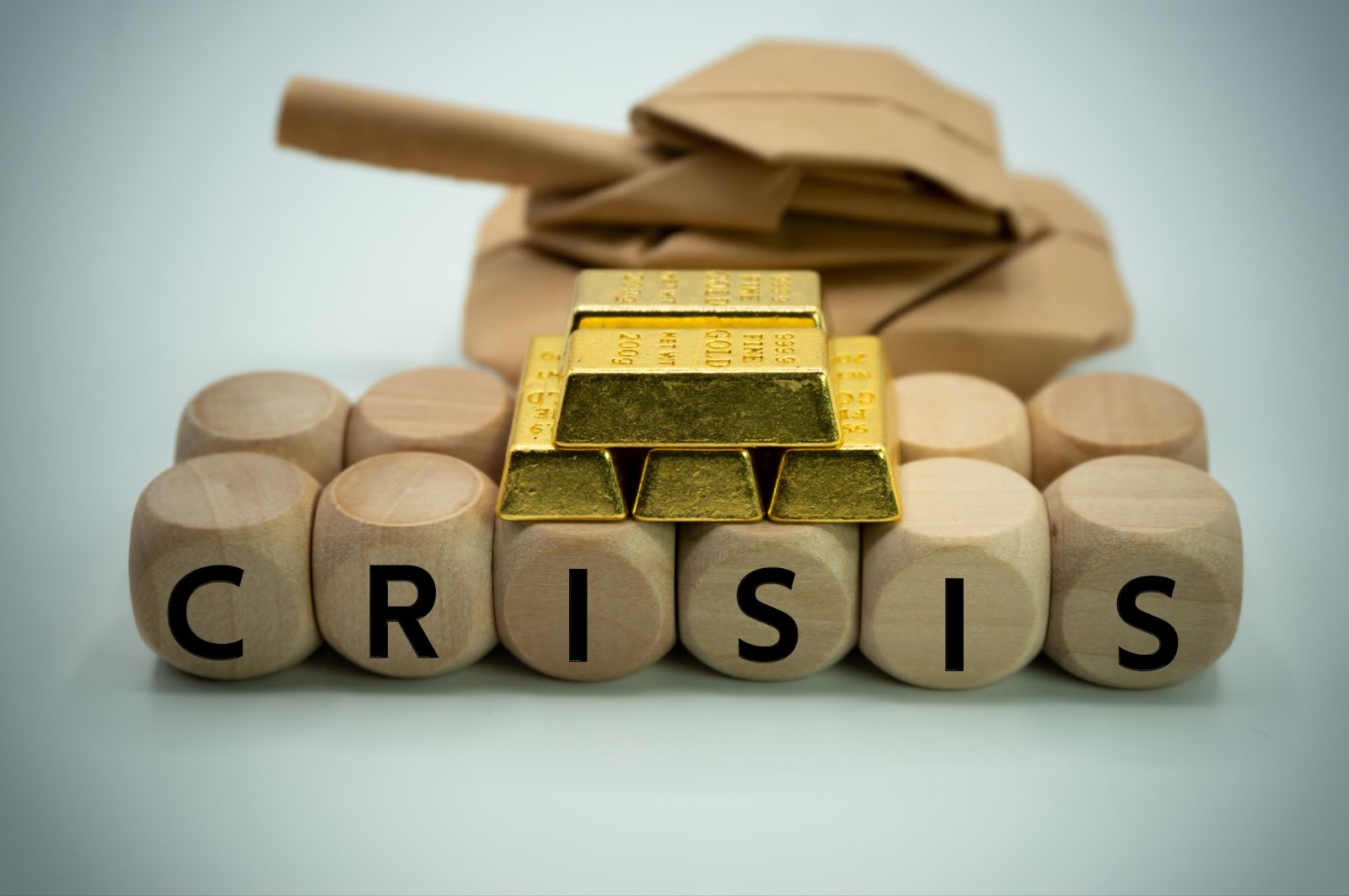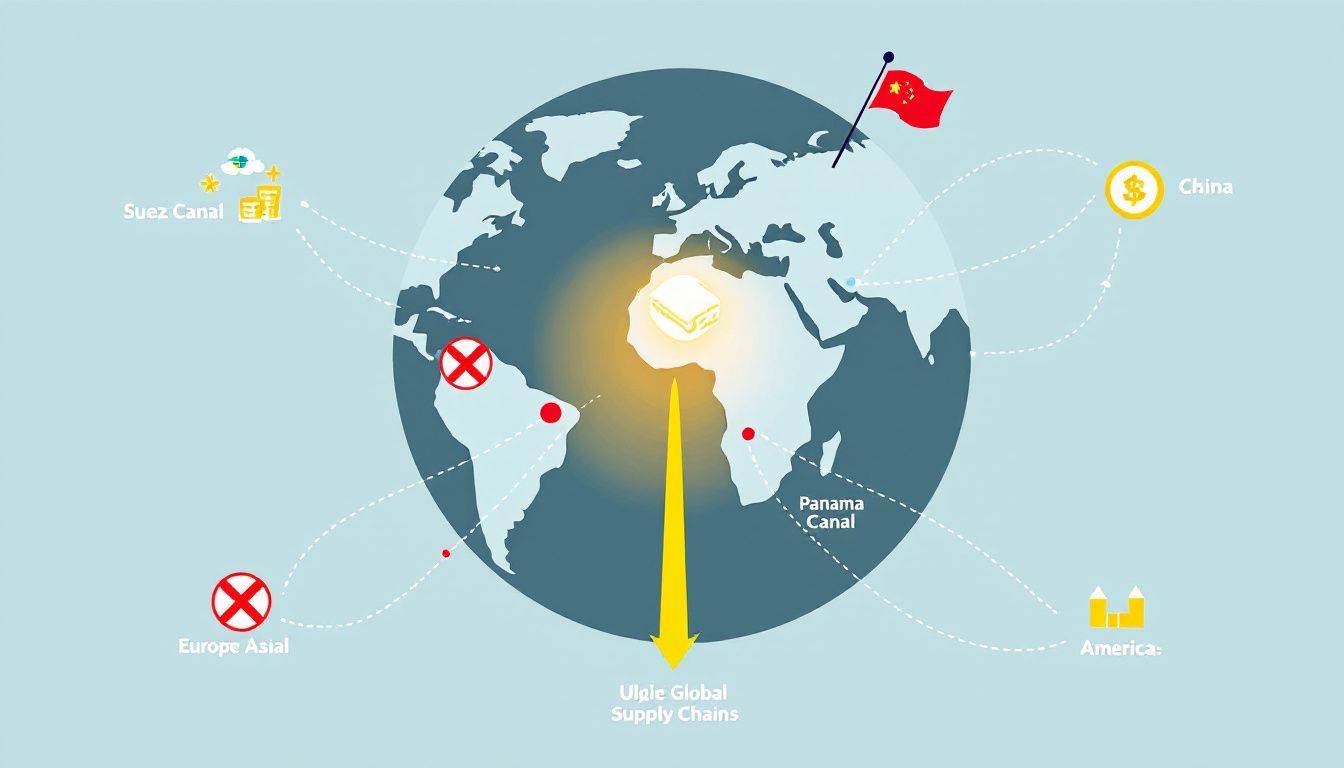In 2025, key geopolitical issues to look out for in 2025 and how it can affect gold will shape the global economic landscape and influence gold prices. From US-China tensions to the Russia-Ukraine conflict, these events create uncertainty that drives investors toward gold. This article explores how these geopolitical issues to look out for in 2025 and how it can affect gold can impact gold, helping you navigate the investing landscape.
Key Takeaways
- Geopolitical tensions, particularly between the US and China, continue to drive gold prices upward as investors seek safe-haven assets amid economic uncertainty.
- Middle Eastern conflicts and instability contribute to increased demand for gold, with prices rising in response to military tensions and market uncertainties.
- Central bank gold purchases remain a significant factor supporting high gold prices, as regions facing geopolitical risks, like Asia and Eastern Europe, prioritize gold to stabilize reserves.
US-China Relations and Trade Wars

The ongoing trade wars between the US and China continue to loom large over the global economic landscape. Initiated by tariffs, these trade wars lead to inflationary impacts, disrupting global economic stability. When geopolitical tensions escalate, they often lead to sanctions and disruptions in energy supplies, further impacting economic stability and market dynamics. The economic uncertainty created by these tensions drives investors towards gold, seen as a safe haven during such times.
Investor sentiment plays a crucial role in gold price volatility. Heightened tensions between the US and China have historically led to a surge in gold prices as investors seek to protect their assets from potential economic fallout. The previous records of such tensions show a clear pattern of increased demand for precious metals during periods of geopolitical instability.
As trade wars continue and economic uncertainty prevails, gold demand is expected to remain strong. Indian demand benefitted from these uncertainties, as investors diversify their portfolios to hedge against potential risks. The continued geopolitical instability will likely keep gold prices on an upward trajectory, reflecting shifts in market dynamics and investor sentiment.
Middle East Instability

The Middle East remains a key checkpoint for geopolitical risk, with conflicts between Iran and Saudi Arabia creating significant instability. These tensions often lead to lower economic growth and increased market uncertainty, driving western investors flocked towards gold as a safe-haven asset. Concerns about potential military confrontations in the region further exacerbate economic uncertainty.
Investor behavior in the face of Middle Eastern instability shows a clear trend: as tensions rise, gold prices tend to follow an upward trajectory. For instance, potential military conflicts, such as an Iranian attack on Israel, could lead to significant spikes in gold prices due to heightened market uncertainty. This pattern reflects the continued geopolitical instability in the region, prompting investors to seek safer assets.
Gold prices have remained strong, staying above $2,000/oz, due to increased demand amid geopolitical tensions. As we move into the second half of 2025, the same factors that drove gold prices in the first half are likely to persist, maintaining the precious metal’s appeal amidst ongoing geopolitical risks.
European Sovereign Debt Crisis
The resurgence of the European sovereign debt crisis poses a significant threat to economic growth and stability in the eurozone. Driven by weak growth and high policy uncertainty, this crisis jeopardizes fiscal stability in several countries. Increased interest payments on sovereign debt are expected to constrain government finances, limiting their ability to respond to economic shocks.
In such an environment, the demand for precious metals, including gold, spikes as they are viewed as a hedge against currency devaluation and inflation. The European sovereign debt crisis, coupled with significantly lower interest rates, makes gold an attractive investment. Central banks and individual investors alike are turning to gold to safeguard their assets against economic instability.
The World Gold Council reports that investment demand for gold, excluding central banks, has seen a significant increase due to these economic uncertainties. As central bankers navigate through this crisis, the continued geopolitical instability is likely to keep gold prices elevated, with annual demand showing a net positive effect on the market.
Russia-Ukraine Conflict

The Russia-Ukraine conflict continues to be a major driver of geopolitical instability and gold price volatility. In 2024, this conflict led to a significant increase in gold prices as investors flocked to the precious metal as a safe haven asset. Despite a decline in inflation, gold prices remained elevated, reflecting the sustained demand linked to geopolitical instability.
Investor behavior during periods of geopolitical tension typically shifts towards buying precious metals, leading to increased market volatility. Should the conflict escalate further in 2025, it may drive gold prices even higher due to heightened uncertainty and fear among investors. Conversely, a resolution to the conflict may initially reduce gold prices, as stability often leads investors to seek higher-risk assets for better returns.
The broad implications of the Russia-Ukraine conflict on gold prices are evident. Concerns over potential sanctions similar to those imposed on Russia have prompted central banks to boost their gold holdings as a safe asset. The continued geopolitical instability in the region will likely keep gold prices rangebound, reflecting the ongoing volatility in investor sentiment.
Central Bank Buying Amid Geopolitical Risks

Central bank buying of gold amid geopolitical risks has been a significant factor in maintaining upward pressure on gold prices. High central bank purchases paired with geopolitical risks are expected to continue supporting higher gold prices. In 2024, economic uncertainty stemming from conflicts led to increased gold purchases by central banks and individual investors, bolstering gold prices.
Central banks globally added 1,037 tonnes of gold in 2023, marking the second highest annual purchase on record. This trend reflects the ongoing geopolitical uncertainties and the role of central banks in stabilizing their reserves with precious metals. Countries like China, India, and Turkey have led the central bank buying of gold in early 2024, indicating a strategic move to counter risk in an unstable global environment.
Regions such as Asia, the Middle East, and Eastern Europe are leading in central bank gold purchases. As central bankers continue to navigate through geopolitical risks, their gold purchases are likely to remain a key driver of gold prices. The continued geopolitical instability will keep central bank demand for gold strong, influencing market conditions and investor sentiment.
US Federal Reserve Policies
The US Federal Reserve’s monetary policies are anticipated to significantly influence gold prices in 2025. Political and economic risks in China and Europe could lead to a dovish monetary stance, benefiting gold as a safe haven. Interest rates are a critical factor; if rates decrease, it could make gold less appealing as riskier investments gain traction.
In 2024, gold prices surged by 27%, reflecting the ongoing shifts driven by the Federal Reserve’s policies. Projections indicate that gold prices could reach around $3,000 per ounce in 2025, driven by these factors. The Federal Reserve’s decisions on interest rates and economic expansion will continue to prompt investors to consider gold as a hedge against economic uncertainty and inflation.
As the Federal Reserve navigates through high inflation and other macroeconomic challenges, its policies will remain a key determinant of gold’s attractiveness. The interplay between interest rates, inflation, and economic expansion will influenced investment demand for gold, shaping the market’s trajectory in the coming year.
Geopolitical Risks in Asia
Geopolitical risks in Asia, particularly North Korea’s missile tests and provocations, contribute to regional instability. These actions prompt Asian investors to seek gold as a protective asset during times of heightened geopolitical risk. Increased military activity and rhetoric in Asia can trigger fluctuations in gold prices, as investors seek to protect their assets from potential geopolitical fallout.
North Korea’s unpredictable actions add to regional anxieties, leading to increased demand for gold among Asian investors. The analysis suggests that as geopolitical tensions rise, so does the attractiveness of gold as a secure investment. This trend is evident in the behavior of Asian investors who turn to gold during periods of geopolitical uncertainty.
A slowdown in China’s economy is another factor likely to increase demand for gold. Amid rising geopolitical tensions, Asian investors have added gold to their portfolios, reflecting a strategic move to safeguard their assets. The continued geopolitical instability in the region will likely keep gold prices elevated as investors seek to mitigate risks.
Latin American Political Unrest
Political unrest in Latin America, particularly the tensions between Brazil and Venezuela, is gaining attention. Brazil’s refusal to support Venezuela’s potential inclusion in BRICS reflects deeper regional divisions and adds to the geopolitical risks in the region. These tensions are likely to drive Western investors towards gold as a safe haven asset amid uncertainty.
The upcoming 2025 BRICS presidency by Brazil raises concerns about the potential for Venezuela’s inclusion during a period of strained diplomatic relations. As political instability persists in Latin America, the continued geopolitical instability will likely increase gold demand among investors seeking to protect their assets from regional uncertainties.
Global Supply Chain Disruptions

Geopolitical tensions in various regions can lead to significant disruptions in global supply chains. The ongoing US-China trade tensions and Middle East conflicts have increased uncertainties in global shipping routes and manufacturing processes. These disruptions create economic uncertainty, prompting investors to rely on gold as a safe-haven asset.
European countries face risks from sovereign debt crises, which could further destabilize supply chains across the eurozone. The conflict between Russia and Ukraine has significant implications for energy supplies and raw material shipments, complicating global supply chains. These disruptions could lead to reduced industrial demand for precious metals due to slowed manufacturing processes and decreased production.
As geopolitical risks persist, the likelihood of ongoing supply chain disruptions remains high. Investors are likely to continue turning to gold to hedge against these uncertainties. The continued geopolitical instability will keep gold prices elevated, reflecting the market’s response to the instability in supply chains and the broader economic landscape.
Summary
In 2025, the interplay of geopolitical issues and their impact on gold prices cannot be overstated. From US-China trade wars to Middle East instability, European sovereign debt crises, and the Russia-Ukraine conflict, each situation presents unique challenges that drive gold demand. Central bank buying, US Federal Reserve policies, and geopolitical risks in Asia and Latin America further complicate the landscape.
As these geopolitical tensions continue, gold remains a steadfast safe haven for investors. The insights provided in this blog post highlight the importance of staying informed about global events and understanding their impact on gold prices. By keeping a close eye on these developments, investors can make more informed decisions and safeguard their assets against economic uncertainties.
Frequently Asked Questions
How do US-China trade wars affect gold prices?
US-China trade wars lead to economic uncertainty, prompting investors to seek gold as a safe haven, which can cause fluctuations in gold prices. This shift in investor behavior highlights the metal’s role as a stable asset during turbulent times.
Why does Middle East instability drive gold demand?
Middle East instability drives gold demand because geopolitical risks from conflicts prompt investors to seek the safety of gold as a reliable asset during uncertain times. This trend reflects a collective desire to protect wealth amid volatility.
What impact does the European sovereign debt crisis have on gold?
The European sovereign debt crisis drives economic instability, resulting in heightened demand for gold as a safe-haven asset against currency devaluation and inflation. This increase in demand often boosts gold prices during such crises.
How does the Russia-Ukraine conflict influence gold prices?
The Russia-Ukraine conflict significantly influences gold prices by prompting investors to seek safe-haven assets amid geopolitical instability, which typically drives prices higher. Should the situation escalate, we can expect further increases in gold prices.
Why are central banks buying more gold amid geopolitical risks?
Central banks are increasing gold purchases amid geopolitical risks to stabilize reserves and hedge against economic uncertainties. This strategy not only preserves value but also supports higher gold prices.
